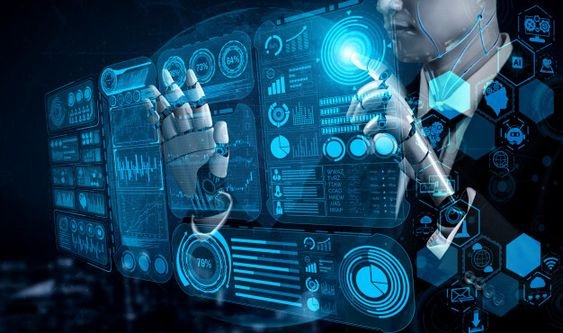
Facial recognition technology (FRT) is rapidly becoming a common tool in both the public and private sectors. It allows computers to identify or verify individuals based on their facial features, captured through cameras or images. This technology is used for various purposes, from unlocking smartphones and tagging photos on social media to enhancing security at airports and public events. While facial recognition offers many benefits, it has also sparked a heated debate over privacy, civil liberties, and the potential for abuse. As a result, some people are calling for it to be banned altogether. This article explores the arguments for and against banning facial recognition technology and considers whether it should have a place in society.
How Does Facial Recognition Technology Work?
Facial recognition technology uses artificial intelligence (AI) to analyze images or video footage of people’s faces. Here’s a simplified explanation of how it works:
- Image Capture: The process starts with capturing an image or video of a person’s face using a camera or a digital device.
- Face Detection: The software detects the face in the image and identifies key features, such as the distance between the eyes, the shape of the nose, or the contours of the jawline. These unique characteristics are used to create a “facial signature”—a mathematical representation of the face.
- Comparison: The facial signature is then compared against a database of known faces to find a match. This database could include images from various sources, such as driver’s licenses, social media, or other public records.
- Identification or Verification: If a match is found, the system can identify who the person is (identification) or confirm their identity (verification).
While facial recognition technology can be highly accurate under ideal conditions, its effectiveness can vary depending on factors like image quality, lighting, camera angle, and the diversity of the data used to train the AI model.
The Case for Banning Facial Recognition Technology
Several arguments have been made in favor of banning facial recognition technology, primarily based on concerns about privacy, civil liberties, and the potential for misuse:
- Privacy Violations:Facial recognition technology enables mass surveillance by allowing individuals to be monitored and tracked in public spaces without their knowledge or consent. Cameras equipped with facial recognition can scan crowds in real time, identifying people and recording their movements. This constant surveillance represents a significant intrusion into people’s privacy, particularly in democratic societies where privacy is considered a fundamental right.
- Threat to Civil Liberties:The widespread use of facial recognition technology poses a threat to civil liberties, such as freedom of expression and assembly. Knowing that they are being watched may discourage people from participating in protests, political rallies, or other public gatherings, chilling free speech and discouraging civic engagement. This type of surveillance can also be used to target specific groups or individuals, raising concerns about discrimination and repression.
- Inaccuracy and Bias:Despite advances in AI, facial recognition technology is not always accurate and has been shown to have significant biases. Studies have found that these systems often perform poorly when identifying women, people of color, and other minority groups, leading to a higher rate of false positives or negatives. For example, a system might mistakenly identify an innocent person as a criminal suspect or fail to recognize a person it should identify. These inaccuracies can have serious consequences, including wrongful arrests, harassment, and discrimination.
- Potential for Abuse:Facial recognition technology can be easily abused by both governments and private entities. Authoritarian regimes can use it to monitor and control citizens, suppress dissent, and target political opponents or marginalized communities. In democratic countries, there is also a risk that the technology could be misused by law enforcement or corporate entities without sufficient oversight or accountability.
- Lack of Regulation and Oversight:Currently, there is a lack of comprehensive regulation governing the use of facial recognition technology in many countries. This lack of oversight means there are few safeguards to prevent abuse or protect individuals’ rights. Without clear rules, guidelines, and transparency, there is a risk that facial recognition could be deployed in ways that are harmful, unethical, or discriminatory.
- Erosion of Public Trust:The use of facial recognition technology can erode public trust in institutions and authorities. When people feel that they are being watched or monitored without their consent, it can lead to a breakdown in trust between citizens and their government or between customers and businesses. This mistrust can have broader social and economic consequences, weakening the fabric of society.
The Case Against Banning Facial Recognition Technology
While there are strong arguments in favor of banning facial recognition technology, there are also compelling reasons to consider regulating its use rather than banning it outright:
- Enhancing Public Safety and Security:Facial recognition technology can significantly enhance public safety and security. For example, it can help law enforcement agencies identify and apprehend criminal suspects, find missing persons, and prevent terrorist attacks. In airports, stadiums, and other public venues, facial recognition can be used to spot known threats and keep the public safe. In these contexts, the technology can be a valuable tool for maintaining order and preventing crime.
- Improving Efficiency and Convenience:Facial recognition can streamline various processes, making them faster, more efficient, and more convenient. For example, the technology can be used to automate border control checks at airports, speeding up the process for travelers. It can also provide a more secure and convenient way for people to unlock their smartphones, access secure buildings, or complete financial transactions.
- Supporting Law Enforcement:For law enforcement agencies, facial recognition is a powerful tool for investigating and solving crimes. It can quickly analyze vast amounts of video footage and images, helping to identify suspects, witnesses, or victims. In some cases, facial recognition has already helped solve serious crimes, such as locating missing children or identifying human trafficking victims.
- Enabling Personalized Services:Many companies use facial recognition technology to provide personalized services to their customers. For example, retail stores can use facial recognition to identify repeat customers and offer them customized deals or experiences. Similarly, facial recognition is used in social media and photo-sharing apps to tag people in pictures automatically, enhancing the user experience.
- Potential for Ethical Use with Regulation:Rather than banning facial recognition technology outright, some argue that it can be used ethically and responsibly with the right regulations. By establishing strict rules and guidelines, such as requiring transparency, obtaining consent, limiting data retention, and preventing misuse, facial recognition can be deployed in a way that respects privacy and civil liberties while still providing its benefits.
- Technological Advancements and Innovation:Banning facial recognition technology could stifle technological advancements and innovation. AI and facial recognition are fields that are evolving rapidly, and with further development, many of the current issues, such as bias and accuracy, could be addressed. Prohibiting the technology altogether could hinder progress in areas where facial recognition could have a positive impact, such as healthcare, accessibility, and public safety.
Is Regulation a Better Solution?
Instead of an outright ban, many experts advocate for the regulation of facial recognition technology to ensure that it is used ethically and responsibly. Here are some possible regulatory approaches:
- Transparency Requirements:Organizations using facial recognition should be required to inform the public about how the technology is being used, what data is being collected, and for what purpose. This transparency would help build public trust and ensure accountability.
- Consent and Opt-Out Options:Individuals should have the right to know when facial recognition technology is being used and to give their explicit consent. People should also have the option to opt out if they do not want their facial data to be collected or used.
- Strict Data Protection Rules:Regulations should enforce strict data protection standards, such as limiting the retention of facial data, ensuring secure storage, and preventing unauthorized access. Organizations should only collect and use the minimum amount of data necessary for their purposes.
- Bias and Fairness Audits:Companies and government agencies using facial recognition should be required to conduct regular audits to detect and mitigate bias and ensure fairness. Algorithms should be tested on diverse datasets to ensure accuracy across different demographic groups.
- Independent Oversight and Accountability:Independent bodies should oversee the use of facial recognition technology to ensure compliance with regulations and protect against misuse. This oversight could include regular audits, public reporting, and the ability to impose penalties for violations.
- Limiting Use Cases:Regulations could limit the use of facial recognition to specific contexts where it is most beneficial, such as border security or identifying missing persons, while restricting its use in areas where it could infringe on civil liberties, such as mass surveillance of public gatherings.
Conclusion
Facial recognition technology presents both significant opportunities and substantial risks. On one hand, it offers benefits in terms of security, efficiency, and convenience. On the other hand, it poses serious threats to privacy, civil liberties, and public trust, particularly when used without proper oversight and accountability.
While there are compelling arguments for banning facial recognition technology, there is also a case to be made for regulating its use to maximize its benefits and minimize its harms. Rather than an outright ban, a balanced approach that involves strict regulation, transparency, consent, and accountability could allow society to harness the positive potential of facial recognition while protecting individual rights and freedoms.
Ultimately, the decision on whether to ban or regulate facial recognition technology will depend on how societies value privacy and security, and the extent to which they are willing to accept the risks associated with its use. As this debate continues, it is crucial to ensure that ethical considerations and human rights remain at the forefront of any discussion about the future of this powerful technology.






